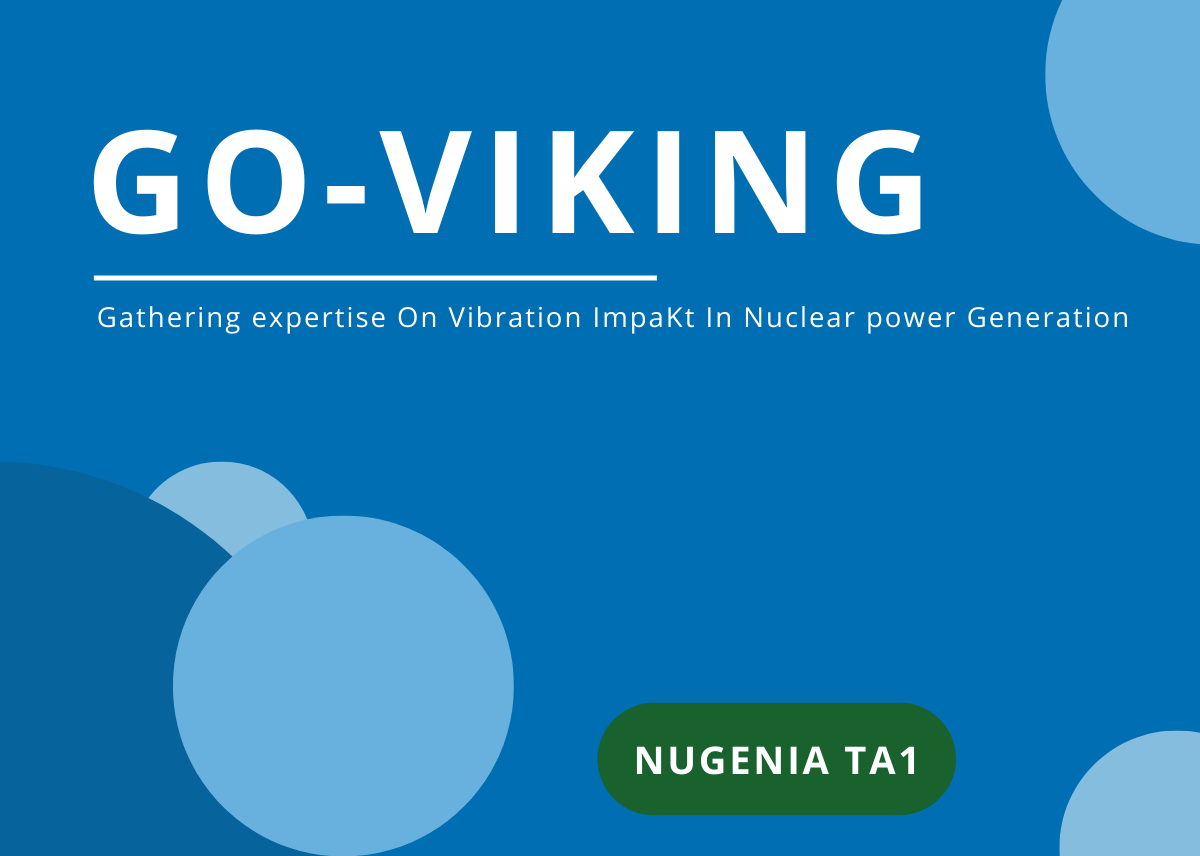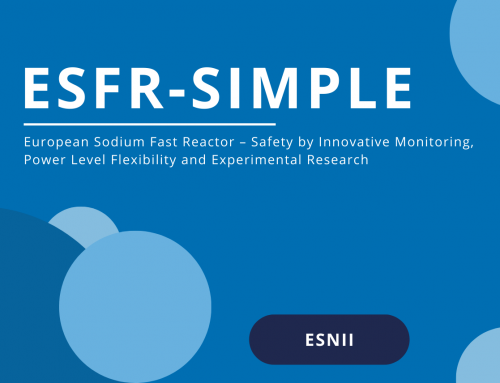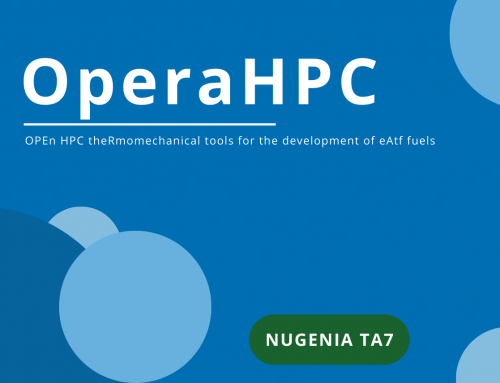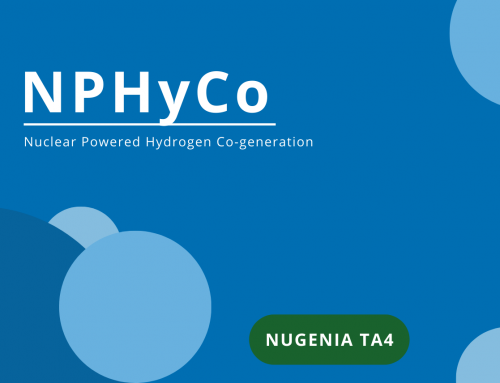
OBJECTIVES
The GO-VIKING project takes over from the VIKING (Vibration ImpaKt In Nuclear power Generation) initiative started in 2020 as an in-kind collaboration of European organizations to enhance the understanding and prediction of flow-induced vibration (FIV) phenomena relevant to nuclear power reactors. The overall objective of GO-VIKING is to increase the expertise and improve the tools and skills of the European nuclear stakeholders for the analysis of complex FIV phenomena. This will be accomplished by:
- Generation of new experimental and high-resolution numerical data, relevant for nuclear fuel assemblies and steam generators
- Expanded knowledge on efficiency, accuracy and reliability of fluid-structure interaction (FSI) methods
- Provision of validated fast-running FSI tools with uncertainty quantification methods
- Highly increased expertise of and awareness on FIV phenomena in nuclear power plants
- Training of stakeholders and graduates in numerical FIV analysis
- Synthesis of best practices for FIV analyses

EXPECTED IMPACTS
- The improved normal operation of current reactors through less fuel rod and steam generator tube leakages will lead to shorter and less plant outages, increased plant availability and lower staff exposure.
- The reduced probability of steam generator tube rupture accidents will enhance reactor safety.
- The increased structural integrity of key components (fuel rods, steam generator tubes) will support the nuclear operators in Europe to successfully realize their power uprate and long-term operation programs.
- Developing accurate and efficient FSI tools and methods, while training experts in their application for FIV will highly increase the understanding of such phenomena in nuclear reactors.
- Community building and networking between academia and industry will further enhance the knowledge.
- The developed modern and general purpose FSI tools will support vendors in the design, and operators in the deployment of innovative nuclear systems.

HIGHLIGHTS
- Generation of high-resolution numerical (DNS, LES) and experimental data for FIV in single and multiphase flows
- Development and validation of medium-resolution (URANS) and fast-running reduced order models for vibration phenomena in axial- (fuel assembly) and cross- (steam generator) flows
- Organization of benchmarks, based on numerical approaches with different resolutions
- Implementation of efficient methods for uncertainty quantification in the FSI results
- Synthesis of best practice guidelines for FIV analysis in accordance with the needs of the stakeholders
- Training of graduates and young experts in the evaluation of FIV-related phenomena with FSI techniques
- International collaboration between European and US experts in the field of FIV analysis

PARTNERS
GRS / NRG / FRA-G / CEA / VKI / IRSN / EDF / EDF-E / UGENT / UoM / TUD / FK / VTT / IPP Centre / ENEN / LGI US partners: PSU / VCU

DURATION & BUDGET
June 2022 –May 2026
4 years, EC contribution: € 2.8 million

CONTACT

EVENTS
- Workshop on Nuclear Stakeholders’ Needs and Regulatory Expectations for FIV Analysis (winter/spring 2023)
- Open Lecture on FIV for Educational Institutions (yearly)
- VKI Lecture Series on Fluid-Structure Interaction (winter 2025/2026)

FOR DOWNLOAD

This project has received funding from the Euratom H2020 programme Horizon under grant agreement No 101060826




